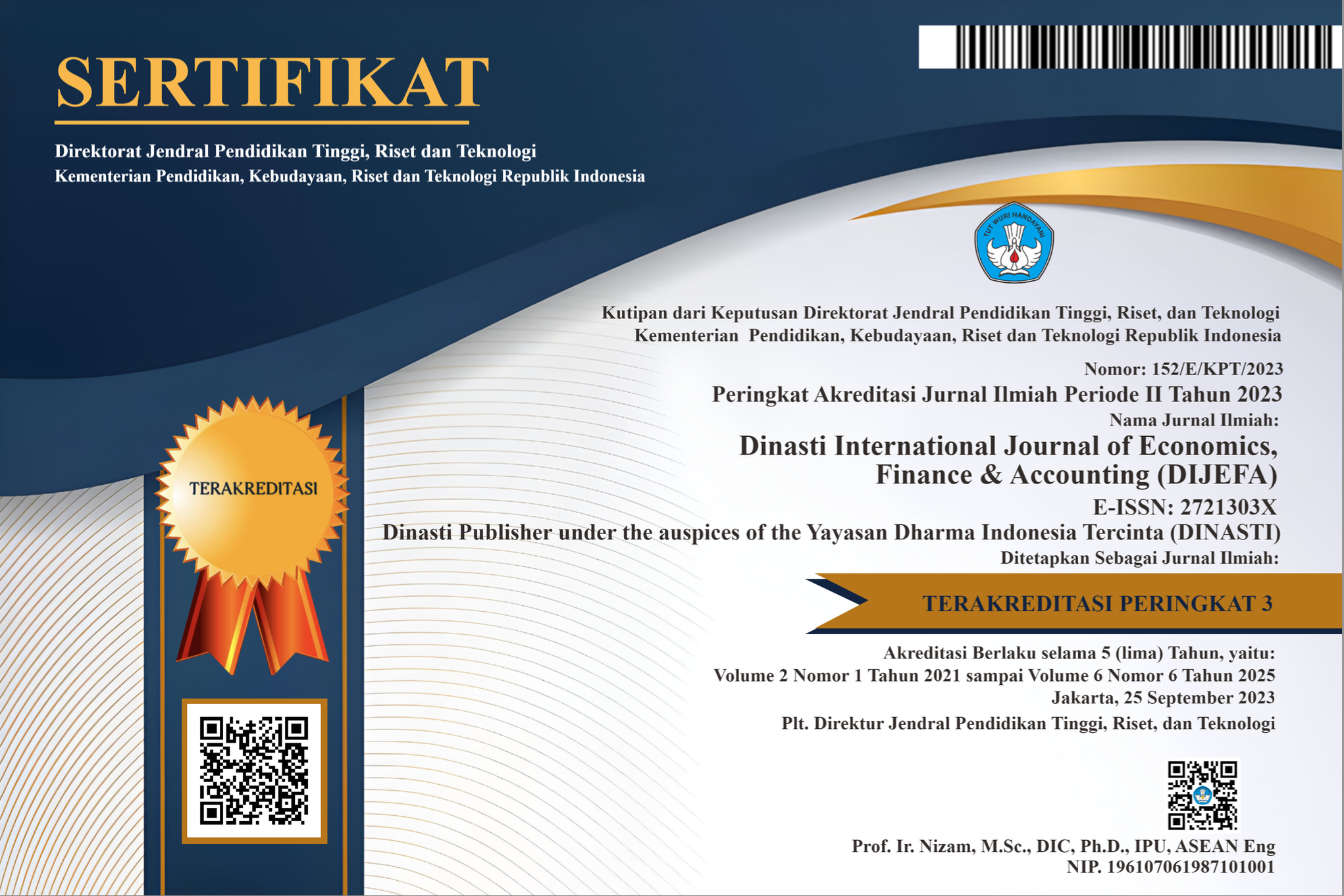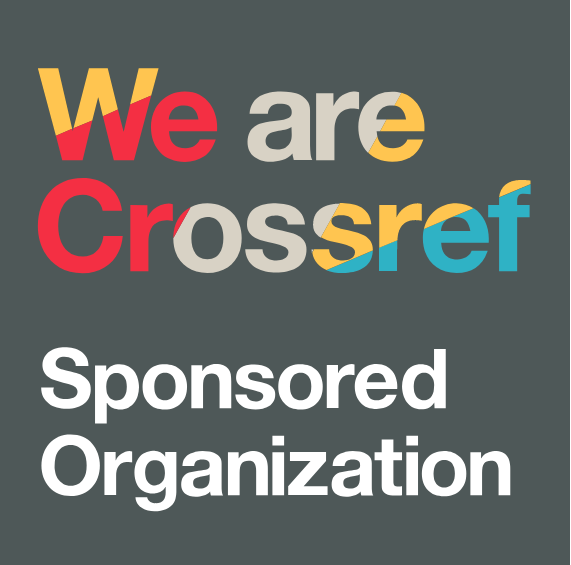Marketing Strategy Analysis Using Apriori Association Method To Increase Sales In E-Commerce Companies
DOI:
https://doi.org/10.38035/dijefa.v6i3.4681Keywords:
Marketing Strategy, Data Mining, Apriori Algorithm, FP-Growth, E-CommerceAbstract
This research aims to analyze marketing strategies by utilizing association data mining algorithms, specifically Apriori and FP-Growth, to increase sales in e-commerce companies. The data used consists of actual sales data from Blibli.com, analyzed using RapidMiner to identify significant purchasing patterns. The analysis results show a strong association between products such as "Mother & Baby Needs – Body Skin Care" (support 0.108, confidence 0.476) and "Skin Care – Household Care" (support 0.195, confidence 0.443). These patterns indicate opportunities to design marketing strategies based on product bundling, discounts, and personalized digital promotions.The Apriori algorithm provides more intuitive and relevant results for marketing analysis compared to FP-Growth, which is better suited for larger datasets. The proposed marketing strategies include digital campaigns, bundling offers, push notifications, and event marketing that emphasize consumers' functional and emotional values. This study highlights the importance of understanding consumer transaction patterns in designing effective marketing strategies to enhance customer appeal and e-commerce company profits. By applying data mining, companies can create more personalized and efficient shopping experiences tailored to market needs.
References
Ahdiat, A. (2023) 5 E-Commerce dengan Pengunjung Terbanyak Kuartal IV 2022, 21 Januari. Available at: https://databoks.katadata.co.id/datapublish/2023/01/31/5-e-commerce-dengan-pengunjung-terbanyak-kuartal-iv-2022 (Accessed: 8 March 2023).
Chaudhuri, S. and Dayal, U. (2022) ‘Dynamic itemset counting and implication rules for market basket data.’, ACM SIGMOD Record, 25(2), pp. 255–264. Available at: https://doi.org/https://dl.acm.org/doi/10.1145/248603.248616.
Creswell, J.W. and David, J. (2023) Research Design: Qualitative, Quantitative, and Mixed Methods Approaches. 5Th edn. California: SAGE Publication.
Daymon, C. and Holloway, I. (2019) Qualitative Research Methods in Public Relations and Marketing Communications, Qualitative Research Methods in Public Relations and Marketing Communications. Available at: https://doi.org/10.4324/9780203996409.
Dewi, N.C., Putrawansyah, F. and Puspita, D. (2021) ‘Implementasi Algoritma FP-Growth Pada E-Commerce Kopi Pagar Alam Menggunakan Framework Codeigniter’, Indonesian Journal of Computer Science, 10(2). Available at: http://ijcs.stmikindonesia.ac.id/ijcs/index.php/ijcs/article/view/3012.
Grand, G. (2018) ‘Penerapan Algoritma Apriori untuk Menemukan Hubungan Data Murid dengan Nilai Sekolah’, Ikraith Informatika, 2(18), pp. 7–12.
Han, J., Kamber, M. and Pei, J. (2023) Data mining: Concepts and techniques. 4Th Editio. New York: Morgan Kaufmann.
Kemp, S. (2023) The state of digital in Indonesia in 2023, 2 Februari. Available at: https://datareportal.com/reports/digital-2023-indonesia (Accessed: 16 January 2024).
Kotler, P. and Amstrong (2021) Bauran Pemsaran. Jakarta: Salemba Empat.
Kumalasari, U.N., Darma Putra, I.K.G. and Dharmaadi, I.P.A. (2020) ‘Implementasi Algoritma Apriori untuk Menemukan Pola Pembelian Konsumen pada Perusahaan Retail’, JITTER-Jurnal Ilmiah Teknologi dan Komputer, 1(2), pp. 1–10.
Kurnia Handayani, P. and Susanti, N. (2019) ‘Analisis Kinerja Algoritma Frequent Pattern Growth (Fp-Growth) Pada Penambangan Pola Asosiasi Data Transaksi’, Indonesian Journal of Technology, Informatics and Science (IJTIS), 1(1), pp. 9–12. Available at: https://doi.org/10.24176/ijtis.v1i1.4596.
Larose, D. and Larose, C.D. (2014) Discovering Knowledge in Data: An Introduction to Data Mining: Second Edition. 2nd edn. John Wiley & Sons. Available at: https://www.researchgate.net/publication/290935584_Discovering_Knowledge_in_Data_An_Introduction_to_Data_Mining_Second_Edition.
Mohan, T.R. and Jayakar, B. (2022) ‘An Effect Of Advertising On Consumer Behavior: A Study With Reference To Consumer Product And Services In Hyderabad’, Specialusis Ugdymas, 1(43), pp. 1581–1594. Available at: https://www.scopus.com/inward/record.uri?eid=2-s2.0-85135020371&partnerID=40&md5=01c3f20064f764c5f818be1749c8aecb.
Phillip, K. and Keller, K.L. (2018) Marketing Manajemen. 15th edn. Pearson education Inc.
Qamal, M., Syah, F. and Parapat, A.Z.I. (2023) ‘Implentasi Data Mining Untuk Rekomendasi Paket Menu Makanan Dengan Menggunakan Algoritma Apriori’, TECHSI - Jurnal Teknik Informatika, 14(1), p. 42. Available at: https://doi.org/10.29103/techsi.v14i1.6747.
Rizaty, M.A. (2023) Pengguna Internet di Indonesia Sentuh 212 Juta pada 2023, 3 Februari. Available at: https://dataindonesia.id/digital/detail/pengguna-internet-di-indonesia-sentuh-212-juta-pada-2023 (Accessed: 7 April 2023).
Sugiyono (2019) ‘Metode Penelitian Pendidikan Pendekatan Kuantitatif, Kualitatif, dan R&D’, in Bandung: Alfabeta.
Suhada, S. et al. (2020) ‘Penerapan Algoritma FP-Growth Untuk Menentukan Pola Pembelian Konsumen Pada AHASS Cibadak’, Jurnal Swabumi, 8(2). Available at: https://ejournal.bsi.ac.id/ejurnal/index.php/swabumi/article/view/8077.
Supiyandi et al. (2017) ‘Association Rules Analysis on FP-Growth Method in Predicting Sales’, International Journal of Recent Trends in Engineering & Research (IJRTER), (3), p. 1. Available at: https://osf.io/preprints/inarxiv/8m57c/download.
Yulianto, E. and Heryanto, H. (2019) ‘Rancang Bangun Perangkat Lunak E-Commerce Menggunakan Metode Market Basket Analysis’, Media Informatika – STMIK LIKMI, 8(1). Available at: https://journal.likmi.ac.id/index.php/media-informatika/article/view/22.
Zamila, A.M.A., Adwanb, A. Al and Vasistac, T.G. (2020) ‘Enhancing Customer Loyalty with Market Basket Analysis Using Innovative Methods: A Python Implementation Approach’, International Journal of Innovation, Creativity and Change, 14(2). Available at: https://www.ijicc.net/images/Vol_14/Iss_2/14286_Zamil_2020_E_R.pdf.
Downloads
Published
How to Cite
Issue
Section
License
Copyright (c) 2025 Nadilla Okviannas, Sunu Widianto, Rita Komaladewi

This work is licensed under a Creative Commons Attribution 4.0 International License.
Authors who publish their manuscripts in this journal agree to the following conditions:
- The copyright on each article belongs to the author(s).
- The author acknowledges that the Dinasti International Journal of Economics, Finance & Accounting (DIJEFA) has the right to be the first to publish with a Creative Commons Attribution 4.0 International license (Attribution 4.0 International (CC BY 4.0).
- Authors can submit articles separately, arrange for the non-exclusive distribution of manuscripts that have been published in this journal into other versions (e.g., sent to the author's institutional repository, publication into books, etc.), by acknowledging that the manuscript has been published for the first time in the Dinasti International Journal of Economics, Finance & Accounting (DIJEFA).


























































